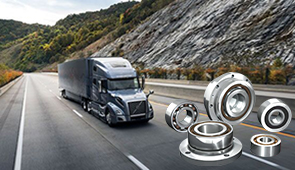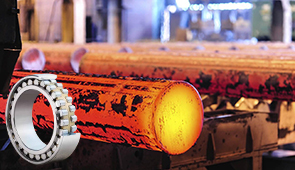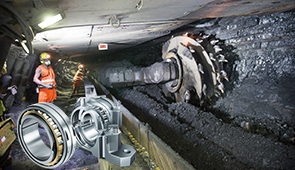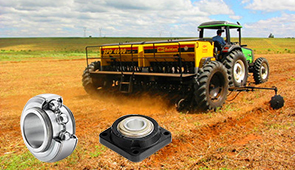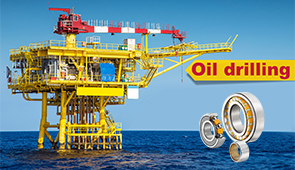Difference Between Oil and Grease: Understanding Lubricants for Bearings
Bearings are critical components in countless mechanical systems, from industrial machinery to everyday household devices. Ensuring their optimal performance hinges on one key factor—proper lubrication. But when it comes to choosing the right lubricant for bearings, the decision often boils down to two primary options: oil and grease. Each has its own unique properties, advantages, and limitations, making the choice highly dependent on specific applications and operating conditions. This article will explore the fundamental differences between oil and grease as lubricants for bearings, providing a comprehensive guide to help you select the most appropriate option to maximize efficiency, reliability, and longevity. Whether you’re maintaining high-speed machinery or ensuring long-term stability in low-motion systems, understanding these distinctions is vital for achieving optimal results.
Difference Between Grease and Oil

Composition and Properties
Grease fits the semifluid lubricants, which contain a basic oil, a thickening material, and additionally a modified complex of various additives. A basic oil, which involves mining or synthesized mineral or polymeric compounds, is the primary lubricant ingredient, while the thickening agent helps form shallow pits and retains the oil there. The additives modify the grease in ways that may improve its properties in areas such as the ability to carry fluids without separation, the ability of the greases to resist oxidation, and the ease with which Extreme Pressure Greases can be made. When grease is needed is in applications where few auto lubricants are readily available, such as most forms of vertical machinery, in which the lubricant must be retained in a machine due to such factors as space and rotational lubrication, only heavy or intermittent lubrication may be applied.
The difference between oil and grease is obvious. Oil is a liquid lubricant as it is based on either mineral or synthetic oils, which are often blended with special compounds to improve certain properties such as the crystallization resistance of the viscosity, anti-corrosion projectile, and the required wear protection. This is useful for heat-generating devices or engines because the rate of interaction and friction in this system is very low, such as pumps and automotive engines. Much as the fluidity enables it for cooled or lubricated conditions, the interconnected parts will remain in touch and thus make lubrication and cooling easy.
The choice of grease or oil will be determined by the technology preferences. Lubrication at high speed and temperature has improved convection-cooled oil due to the dynamic way it lubricates. Conversely, in low-speed applications, especially under the severe conditions of high tension or weight, where the need to keep lubricant in food for as long as possible precludes the possibility of frequent application and, by extension, other subsequent overuse. Users would greatly help themselves in improving the performance of devices as well as in prolonging their use by expanding them when they understand these differences and apply them to actual machine designs.
Viscosity and Consistency Differences
Viscosity and consistency are the two main features that differentiate lubricants and determine the best usage. Consistency refers to the property of a fluid that inhibits its flow as well as its tendency to provide an oily or coating effect. For example, an oil that has a lower viscosity allows an easier flow and gives the intended lubrication in relatively higher speed and light load applications. On the other hand, a very high viscosity liquid is more suited for use in moving components that are not fast and have compounding loads on them, since the lubrication film, as it will continue to be present disfigured.
On the contrary, consistency applies normally with grease and denotes the softness or the ease with which it can be deformed when a given force is applied. A lubricating grease is classified in most cases depending on its consistency and is carried out by the NLGI grading system. Soft greases, which have a lower NLGI rating, are specifically designed for light-duty applications where a lot of movement occurs within a system. On the other hand, hard greases, which are higher compared with the grading, are used in heavy-duty applications where there is a risk of breakdown in shear.
Secondly, the choice between oil and grease depends mainly on the interplay of viscosity and consistency. Oil succeeds in maintaining heat balance and remains aesthetically acceptable even with energetic and cyclic motions of the system in dynamic motion, provided the oil is of appropriate viscosity, reducing friction. Grease – having optimum consistency in terms of range – proves to be much more reliable and has durability whenever such equipment is operated and stopped at regular intervals. Using the wrong lubricant can lead to insufficient body strength, wear of components or overheating, which is evident that it is important for these conditions to be addressed to function effectively.
How Each Lubricates
Lubrication mechanisms of oils and greases differ mainly because of physical properties and utilization. Oils work by creating a category between moving parts, where they limit friction and the rate of wear and tear. This is facilitated by the fact that both hydrodynamic and boundary lubrication support is possible through the oil because it can maintain a uniform layer to avoid contact structures across various temperatures, pressures, and velocities. They are also great for high-speed, high-temperature systems, given that they flow easily, due to their vasculature, are good heat conductors, and help to maintain cleanliness on surfaces.
Ubiquitously, as it lubricates the oil, the grease is different in its adhesion to the surfaces for even extended periods. It consists of the base oil, load-bearing additives, and other additives that encapsulate the oil and house it within points of contact. In a case of stop-and-go motion, low-speed, or in such areas that access for relubrication is nominal, grease is found to be most useful. In addition, its toughness can combat situations of washouts as well as resist impurities and other elements, finishing off protection limits even under arduous situations.
There will be instances when either oil or grease is feasible in terms of a lubrication application. For instance, where the mechanical system is a high-speed and high-temperature system, it is recommended that the system use oil to help deal with the heat and for the ease of cooling, whereas where the concern is durability and simple maintenance, grease is preferred. If lubricants are selected and applied correctly, they help prevent failure mechanisms, enhance the useful life of the systems, and improve the energy efficiency of the systems.
Types of Oil and Grease

Common Types of Oil
Industrial and mechanical plants have many types of lubricants for machines of different functionality and working conditions. Various kinds of oils, the most popular being mineral oil, which is obtained from crude oil and grades of which may be different depending on the type of equipment and processes used, are widely used for this purpose. They often contain certain additional stabilizers and additives so that the physical and chemical properties, such as stability, resistance to aging, and friction, are enhanced.
Furthermore, there is a need for an especially expansive and cooling liquid in systems. Diligent efforts and application of advanced technology in the case of the formulae allow for a substantial improvement in the properties of catalytic-converter bio-oil. Therefore, synthetic oils are suitable for high-performance structures due to their ability to maintain their viscosity longer than mineral-based oils.
There is also a trend that they need to use lubricants that can degrade over time. This is where biodegradable lubrication oils come in. These oils are vegetable-based and are used to reduce toxic waste.
For particular cases, a system or a product, semi-synthetic oils, which consist of a combination of mineral oil base and synthetic oil additives, are also feasible as they help to address massive requirements and expectations. In this context as well, it is important to properly consider and take measures to avoid such damage.
Common Types of Grease
Grease is a very useful content used in machine trading to decrease friction and wear. Such applications are very favorable in cases where liquid lubricants cannot be utilized. The chemical constitution of grease usually involves a base oil, such as mineral or synthetic, a thickener, and some additives that provide the aforementioned qualities. The most common types of grease and their applications are described poignantly below:
- Lithium Grease: Lithium grease has one of the most versatile uses of any other grease, primarily aimed at robust water resistance and tolerance to high temperatures. It is applicable to various automotive wear components, including wheel bearings, pinion, and suspension systems. It is used in applications where some of the heat raises the drop point up to 190 degrees Celsius in terms of lithium greases. In this, it increases focus towards resin tribological regimens compared to the mechanical and heat treatment operations.
- Calcium Grease: The marine, wet-type operations, or the environments that are likely to be subject to water use frequently, are some of the situations to which calcium-based grease is confined due to its unique anticorrosive properties in water. Even though it appears to work efficiently in a wet environment, however, it has low heat resistance and is not recommended for high temperatures, which is not the case with lithium-based greases.
- Polyurea Grease: Polyurea is commonly used for industrial automation applications, and its high temperature stability, as its heat tolerance is very high. Since this attribute is for use in re-badging of electric motors and issues of high velocity at a temperature range that is compatible with offering stability, and can be incorporated in the system without the need for regular relubrication, although in certain cases.
- Molybdenum Disulfide (MoS2) Grease: Molybdenum disulfide in the grease leaves a surface that is wear-resistant and capable of carrying any load, and hence could be used in heavy-duty and high-pressure situations like construction and industrial machines. The lubricants possess viscosities together with the properties to remain in extreme pressure limits, thereby prolonging the life of the components under difficult-to-resolve operations.
- Silicone Grease: This product is desirable, especially where the surfaces of other materials like rubber and plastics have to coexist because of a high adhesive and cohesive strength. Its thermal and mechanical resistance properties are of high-end quality, and it is employed in electrical connectors and in connecting O-ring and sealing devices.
- Aluminum Complex Grease: Aluminum complex grease is very qualified for areas where elevated temperatures are found since it’s very strong against oxidation and has a higher drop point. Its abilities are enhanced such that it can be used in the making of food grades due to the less corrosive nature of the aluminum in the thickeners in some of the oils.
When faced with machinery, it is of utmost importance to select the correct grade of grease. Factors such as the temperature of the work, level of cleanliness of the work zone, force on the constituents, and effect of tributed work on the material should be looked into thoroughly for the best performance of lubrication. In the oil and grease industry, innovative steps are being taken with the advent of new technologies aimed at addressing industrial problems such as prolonged durability of products and environmental degradation caused by such products.
Specialty Lubricants
Specialty lubricants are a high-functional class that is designed for very sophisticated and technical applications. These lubricants are made for situations where the normal oil and grease fail to function, for instance, very high or very low temperatures, high load, and even chemical attack and sensitive moving parts of a machine. Specialty lubricants incorporate in their structure three fundamental classes of substances, namely base oils, additives, and thickeners, which have been developed for such conditions in response to these demands. For instance, fluorolub can be applied to many hard industries through boiling temperatures and steer reaction rates as well.
Specialty lubricants have changed significantly as a result of the recent advances in synthetic chemistry and additive technologies.. Such advanced developments like perfluoropolyether-based oil or PFPE greases and molybdenum disulfide additives have shown excellent work in reducing wear and increasing the load-carrying capability under heavy load conditions. Those changes improve not only the machinery’s life expectancy but also shorten the period of repair and lower the industrial sustenance costs. Nevertheless, the social concerns have led to the making of more friendly products such as lubes and non-toxic handouts.
Proper identification and application of specialty lubricants are necessary for optimum use of the equipment as well as minimizing downtime. When it comes to the choice of the most appropriate lubricant, more concrete factors such as lady-force compatibility and the lubricant’s performance under such conditions are estimated during the process of selection.
Applications Across Industries
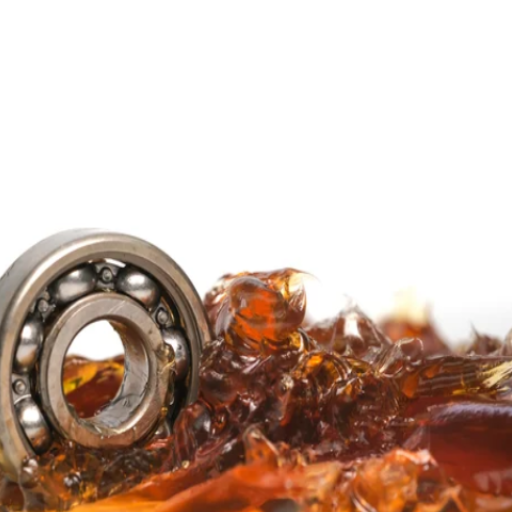
Automotive Industry Usage
Due to the nature of the automobile industry, lubrication is a key focus since the running of various minor parts affects the performance, life span, or fuel efficiency. Lubricants of high quality, either synthetic or bio-based, are applied to the components of vehicles such as engines, transmissions, brakes, wheel suspension, etc., to protect them from friction and wear. They also enable a broad temperature range, as their chemical properties ensure exceptional protection without breakdown due to thermal effects such as Irradiation and Oxidation, hence meeting operational requirements specifically in difficult situations or environments.
How to produce and avail effective lubrication substances in abundance has also impacted the way cars are built in today’s market, notably. When, for example, the machines consist of bearings, bushings, and seals, processes that involve the addition of high-performance greases will be quite challenging. These agents also have the advantage of reducing fumes and odours in the workplace. Holdings, by extending the service life of components to which the oils are applied. Such steadfastness is necessary for meeting the prescribed expectations in addition to enhancing consumer loyalty.
Looking at the bigger picture, there is an increasing significance in terms of the development of biodegradable as well as non-toxic lubricants in the automobile industry. These consumables correspond to relevant legislations at the global level by largely abolishing the impact that vehicles create on the environment during operation and maintenance. These substances liberate transportation as well as manufacturing players from embracing the past in the development of high-performance fluids.
Manufacturing and Industrial Machinery
The area of manufacturing and industrial machinery has seen some big improvements, of which the most noticeable would be the rapid construction and advanced products built with cutting-edge technologies and the materials used in the process. Modern equipment includes more and more equipment with integrated systems and automated mechanisms using artificial intelligence (AI) and machine learning (ML) – systems that are smart and able to make decisions in real time and to optimize the outcomes of processes if required. These systems, in turn, not only raise the efficiency of systems but also enable the prediction of breakdowns and so decrease the instances of standstills among machines by use of smart maintenance. In addition, the expansion of the use of such technological advances as Industry 4.0, primarily the Internet of Things in conjunction with edge computing, enables to connection of machines in networks, hence establishing intelligent and connected factories.
Energy and environment efficiency and the health of the planet have also led to a significant change in the field of industrial machinery. Renewable and induced energy are now used in plants and rotor machining centers that have resulted in lower levels of emissions and the attainment of environmental safety demands, strict international protocols. Besides, there are some new materials introduced in the Industry, that as composite, very high-strength metals, and recyclable plastic-just to name a few. These materials are highly durable and they are a promise of significant amendments towards the use of the resources properly, that is, with less wastage. Along with that, it lessens the risk of pollution and maintains the value that demand-driven industries such as automobiles, aircraft, and consumer products are able to achieve within their production systems.
The world demand also raises several more sectors, including the use of industrial machinery components. Industrial manufacturing has more advantages as compared to conventional technologies since the items that are being manufactured are produced by a combination of materials, which are strategically placed, given aspects of the inherent geometries of the components. Thus, additive production, which is more often referred to as 3D printing, qualifies to be found in many of these applications of machinery construction. This technique, which is offered by 3D printing, offers the best chance of reducing waste and, in particular, fabricating parts that are very hard to cast and do so in a cost-effective manner. Recent studies predict that the rate of model creation using 3D printing techniques will increase owing to a more substantial demand for rapid prototyping and replacement of parts.
Aerospace and High-Performance Applications
One of the industries that has adapted fastest to high-performance technology is the field of aerospace, which has incorporated the use of advanced manufacturing and light materials, and technology to produce efficient, reliable, and easily produced engines. Listed below are five of the advanced technology applications that are applicable in the aerospace and high technology industries:
- Light-Weight Structural Components: Light-weight structural components are an empirical design of system architecture that is adaptable to incorporating carbon fiber composites and advanced aluminum alloys, which can usefully and precipitously reduce the total mass of airplanes by between 20 and 40%.
- 3D Printed Engine Components: Another very important bridging technology is 3D printing, for it has changed the way engines have been built over the short time it has been in use. 3D printing now allows for the creation of geometrically complicated engine components, such as fuel nozzles, which were not considered before because of their complexity. An instance in future fuel nozzles is the 3D printed ones from GE Aviation, which have a weight that is 25% less and last up to 5 times longer as compared to the traditionally produced ones.
- Advanced Avionics Systems: Avionics systems are made more efficient due to the rapid development of electronics components in smaller packages, as well as efficient power management systems, and these improve the overall performance, reliability, and safety of the navigational, communication, and flight control systems. The effect of the AI-supported diagnostic equipment is even more pronounced in the field of anticipatory repair when there is a reduction in the breakdowns occurring while the equipment is in use.
- Hypersonic Aircraft Development: Hypersonic flight, or transportation going faster than five times the speed of sound (Mach 5), is enabled by materials such as ceramic matrix composites, which are structured such as to accommodate the HTR exhaust fuel injection at temperatures beyond 30000°F. These gills also have greater adaptability for the development of high-speed speed payload-capable civilian and defense aircraft applications.
- Satellites and Space Exploration: Current technology allows for the creation of light and tough components that can be used in satellites to give more killing and less costly results. Furthermore, there are space manufacturing technologies, such as 3D printing, capable of manufacturing tools and structures during space missions, giving more autonomy in long-term exploration.
It is these advances that distinguish efficiency and performance and also show how far the contribution of the aviation industry is from the adoption of modern technologies and its development.
Advantages of Using Grease vs Oil
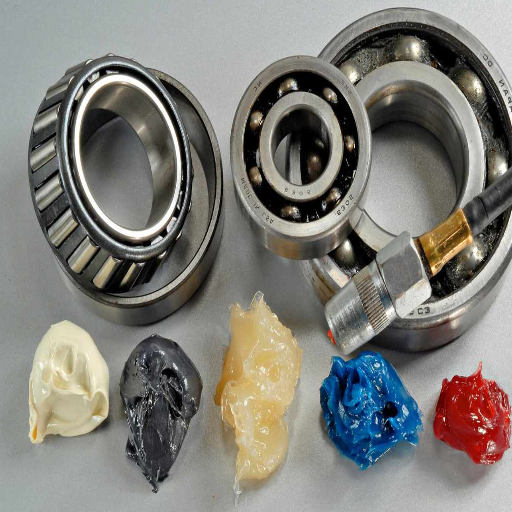
Benefits of Grease in Lubrication
- Enhanced Retention and Reduction of Leakages: The grease colloid has a gel-like ticking, making it suitable for applications under high and or vertical positions which require that the ticking be retained without any excessive secretion of oil or be displaced by gravity or motion, for example.
- Enhanced Performance To Face Extreme Conditions: Grease gives reasons to consider its potential areas of exceptional ability with its performance in both very low and extremely high temperature ranges or within the extreme levels of the environment. It is a clean and water-resistant substance mainly used in applications such as pumps, motors, and wheel bearings since one can easily achieve a thick film of lubrication in their assemblies, and their operating temperatures, orientation, and structural examples of load do not contradict each other. For example, Greases with the branding of ‘Saytex’ are found in the market and are capable of functioning between -40°F and 400°F effectively.
- Fully adjusted service life: Since grease can remain in place for long periods, there are fewer chances for reapplication, which is desirable because it reduces maintenance activities to the barest minimum and it is possible to utilize equipment for practically employed longer duration i.e industrial machine tools even though they are without working/running capabilities.
- Safety from Dirt: Grease provides one more layer of protection as it shields against solid and liquid debris materials such as dust and rain. This makes it possible to reduce the cases of faults and expensive remedies on the equipment due to the secondary resources being applied.
- Exceptionally Elastic Absorption: For the fact that grease is sticky, it serves as a good shock absorber and damping material in many high-duty and dynamic situations. The said grease thus comes as a reserve to many heavy-load bearing machines, for instance, at works of construction and mining, where the machines are located in operational and material-sensitive conditions.
When to Use Oil Instead of Grease
As opposed to grease, oil is commonly used in situations where lubrication has to travel to the inner parts of the equipment in question, which grease will have difficulty reaching. For illustration, in high-speed mechanisms like turbines, bearings, or gearboxes, the lubrication’s state of being a fluid enhances cooling and results in less wear under wide conditions of operation. Also, oil is more convenient in operation when the lubricating elements are in constant movement, for example, the fact that it can be pumped, cleared of impurities, and cooled as part of the lubrication system.
Particular branches, for example, the ones specializing in the production of automotive and aircraft components, use oil in the context of mechanical precision. Basic equipment, such as engines or hydraulic power units, requires lubrication due to the close fitting and the rapid rate of rotation, leading to oil film action. In this regard, consideration should also be made of the circumstances in which the equipment is designed to operate. For example, cold environments are more suited for oil in comparison to greases, which may harden and lose their lubrication property with a decrease in temperature.
Determining whether oil or grease would be the best choice involves considering factors such as operating temperature, speed, and load, as well as the environmental conditions. The proper selection of lubricant and application technique together extends the useful life of the machinery and reduces service expenses, assuring that the equipment operates correctly for a long period.
Long-Term Performance Considerations
In the case of evaluating long-term efficiency of working fluids in systems, it is important to understand the interrelation between the selection of working fluid and its materials and the devices it comes in. It is also important to make sure other parts, such as seals or bearings, are not destroyed gradually or ever, which in worst-case scenarios can lead to failure due to poor design. Furthermore, it is important to establish the degradation of the lubricant over the years, specifically due to thermal oxidation, as well as due to contamination in the form of the entry of external particles or moisture.
Advanced chemistry helps in achieving this goal: chemistry of lubricants, their stability, and in due course corrosion, adhesion, and wear of the material. This includes the use of antioxidants and antiwear agents, which are compounds that extend the lifespan and usability of lubricants. For example, antioxidants work together with wear-resistant conjunctive agents to prevent oil from aging very rapidly at high temperatures and so improve their performance. On a similar note, anti-wear additives provide a gelling film, which protects rubbed metal surfaces, such that stronger stress adherence is exhibited to prevent significant friction-induced abrasion.
Documentation over a longitudinal period, especially through field studies, was successfully able to offer proof of the necessity of implementing oil analysis programs as a conditioning monitoring tool. Based on results that are gained through the conducted in situ wear and oil studies, potential equipment failure may be averted. This is because the damages and their causes are usually predictable, many times before the actual incident happens, and as such, numerous unnecessary hours are spent idling and enhancing bench work sessions. Given all these facts, the protective plan comes in as the ultimate strategy that guarantees the achievement of long-lived and cost-efficient equipment performance.
Common Misconceptions
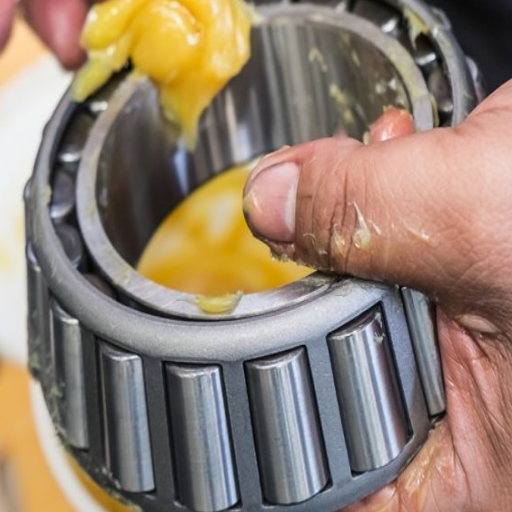
Myths About Oil and Grease
When it comes to making grease and oil part of lubrication programs, there are many myths that could affect how best practices are carried out, whether unnecessarily or expensively. The myth that often occurs is that “All greases are the same” is unfounded and leads to the incorrect choice of lubricant in some cases. Instead, it’s known that the lubricating properties of greases are intended to fulfill specific requirements that are directly affected by machine types as well as service conditions or the working settings. Take, for instance, synthetic greases, which in some situations could provide high efficiency as opposed to conventional ones, which could work well while there are no extremely high or low temperatures.
Among such stereotypes, there is another one, which states that “the more grease we put, the better it is for lubrication purposes”. While this sounds nice and solves a lot of problems, but fact is that too much grease is counterproductive, especially because it causes wastage and also destruction of the equipment, since the excess will make the bearings very hot, gunked up, and the sealing system to fail, and so on. It is urged that lubrication is an art that needs great attention to detail, determined by gravity, an equivalent velocity, and even the conditions of usage.
Finally, there is the fallacy that “the oil age does not count”. Every material like oil has a life span but in the case of most oils, petroleum fluids have prolonged life span unless affected by other factors such as oxidation, dirt, water and excessive heat causing them to lose their oil usefulness and others capabilities and expenses of further damage or wear on equipment because of poor oil replacement practices. Dispelling these myths and correcting their associated practices is vital because it helps to be in line with accepted standards, knowledge, and best used machine maintenance.
Understanding When to Choose Each Lubricant
Deciding on the most appropriate type of lubricant involves weighing both the mechanical realities of the equipment and the thermal behavior capabilities of the lubricating material, fit for the purpose. There are various kinds of lubricants, viz. mineral base lubricants, synthetic lubricants, and biodegradable lubricants that have their strengths, and each has its respective applications. For instance, even within synthetic lubricants, depending upon their strength and intended concentration, they may be used in applications with high temperatures because of their strength in resisting heat, as compared to mineral oils, even at lower temperatures up to normal operating conditions.
There are certain things one needs to consider while looking for a lubricant, such as the load-bearing capacity, the viscosity, and the chemical compatibility within the system. Viscosity is considered one of the most important characteristics, and the appropriate level must be selected depending on the conditions inside the machine and its speed in order to provide enough strength to the lubricant and prevent early wear. Apart from it, there are certain types of lubricants aimed for high-load applications like gears or heavy-duty industrial machinery, which may also need extreme pressure additives to avoid scuffing or pitting of the surfaces due to significant loads. Also, attrition of components elsewhere inside the equipment due to a mismatch with the seals or coatings, or any other integral components of the system, needs to be avoided as well.
Another main factor of concern when it comes to a lien on a lubricant product will be matters of compliance with environmental regulations. For example, biodegradable lubricants are being used more and more by industries that operate in some of the most fragile areas, just in case there is a chance of an environmental disaster. Lastly, technology has developed some sectors that have offered alternative lubricants like nanotech-based or other types of lubricants that are single-use but have higher performance due to friction and wear components. It is through this that a more accurate and efficient lubricant choice compatible with the objectives and actions to be taken can be arrived at by looking at these variables and environmental conditions.
Impact of Improper Lubrication Choices
Wrong selection of lubrication or improper application can trigger a rippling effect through systems, respective domains, and the environment.
- Hardware Wear and Tear Growth: Use of the wrong or insufficient lubrication can hasten the deterioration and deposition of aggregate materials due to the absence of appropriate lubricants. The Survey made by the Machine Lubrication window indicates that about 70% of equipment damage is related to the inadequate lubricating concepts. These complications are an intended consequence of improper oiling systems since the machinery lasts less and is more expensive to replace.
- Performance and Capacity Decrease: The use of an unsuitable lubricant could cause additional energy consumption due to an increase in friction or thermal stability of the machines. Energy loss from friction can be as high as 15-20% of the total energy used in industrial systems. This directly affects the efficiency and productivity of these systems.
- Nature depletion: Inadequately selected concerning application or unrecycled lubricants can tend to penetrate the composition of the soil and ground waters and get polluted. Non-degradable or derived from oil-based lubricants contribute to such change of the natural environment even more.
- Hazardous Wastes – Overuse of lubricants: Another damaging effect is ineffective lubrication that can lead to engine overheating, some oil leakages, and at the extreme, mechanical solid components may stop functioning. These increase the chances of unpredictable failures and put the welfare and investments of personnel and the facility at risk.
- Additional Costs Related to Maintenance as well as Downtime: Among repair works, a higher frequency of which is attributed to the lubricating items, maintenance, plus components and equipment do occur, especially if environmental lubricant maintenance-related issues are concerned, and this may lead to longer time duration of repairs and higher labor hours. Unplanned downtime owing to lubrication failures, for instance, about 12% do costs manufacturers an average of $260,000 every hour spent in the production process.
The resolution of these four effects can only be adequately addressed in terms of suitable lubricant selection for every situation and the corresponding maintenance procedures.
Frequently Asked Questions (FAQ)
Q: What is the primary difference between oil and grease?
A: The main difference between oil and grease lies in their consistency and formulation. Oil is a viscous liquid that flows easily, while grease is a thicker substance, often made by mixing oil with soap or other thickening agents to create a semi-solid form. This difference affects their applications and performance in various environments.
Q: How do oil and grease work as lubricants?
A: Both oil and grease are used to lubricate machinery and reduce friction and wear. Oil’s ability to flow allows it to reach small spaces and cover surfaces quickly, while grease’s thicker consistency helps it stay in place under high pressure and higher temperatures, providing a barrier against contaminants.
Q: Which is better for high-pressure environments, oil or grease?
A: In high-pressure situations, grease is often preferred instead of oil due to its ability to stay in place and resist leakage. Grease can form a thick barrier that protects components from corrosion and external contaminants, while oil might dissipate or drip away under extreme pressure.
Q: Can grease additives enhance performance?
A: Yes, grease additives are often included in formulations to improve performance. These additives can enhance the grease’s ability to reduce friction and wear, increase resistance to heat generation, and provide additional protection against contaminants and corrosion.
Q: Is there a specific situation where oil is more effective than grease?
A: Oil might be more effective in applications where high speeds and low viscosity are required, such as in certain engine components. It can flow more freely to lubricate moving parts smoothly, unlike grease, which may become too thick in such scenarios.
Q: How does grease consistency affect its use?
A: Grease consistency is crucial in determining its effectiveness in various applications. Thicker greases can provide better sealing against contaminants and stay in place longer, while thinner greases may flow into tight spaces but can be more prone to leaking.
Q: What are some common contaminants that affect oil and grease?
A: Common contaminants include dust, dirt, water, and metal particles. These contaminants can compromise the performance of both oil and grease, leading to increased friction and wear. Proper maintenance is essential to keep lubricants effective.
Q: How do temperature changes influence the choice between oil and grease?
A: Temperature changes can significantly influence the performance of both lubricants. Grease tends to perform better at higher temperatures due to its thicker consistency, while oils may thin out, making grease a more reliable choice in extreme heat situations.
Q: What role does graphite play in lubricants?
A: Graphite is often used as an additive in grease formulations to enhance its lubricating properties. It helps reduce friction and wear while providing a slick barrier that can withstand high pressure and temperatures, making it a valuable component in certain applications.
UCTH213-40J-300 with Setscrew(inch)
CNSORDERNO: Normal-duty(2)
TOGN: UCTH213-40J-300
SDI: B-R1/8
SD: 2 1/2
UCTH212-39J-300 with Setscrew(inch)
CNSORDERNO: Normal-duty(2)
TOGN: UCTH212-39J-300
SDI: B-R1/8
SD: 2 7/16
UCTH212-38J-300 with Setscrew(inch)
CNSORDERNO: Normal-duty(2)
TOGN: UCTH212-38J-300
SDI: B-R1/8
SD: 2 3/8
UCTH212-36J-300 with Setscrew(inch)
CNSORDERNO: Normal-duty(2)
TOGN: UCTH212-36J-300
SDI: B-R1/8
SD: 2 1/4
UCTH211-35J-300 with Setscrew(inch)
CNSORDERNO: Normal-duty(2)
TOGN: UCTH211-35J-300
SDI: B-R1/8
SD: 2 3/16
UCTH211-34J-300 with Setscrew(inch)
CNSORDERNO: Normal-duty(2)
TOGN: UCTH211-34J-300
SDI: B-R1/8
SD: 2 1/8










